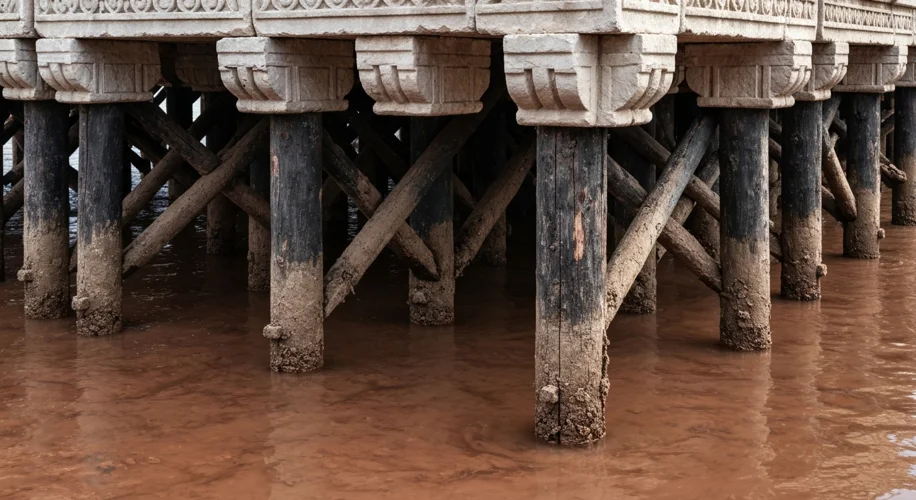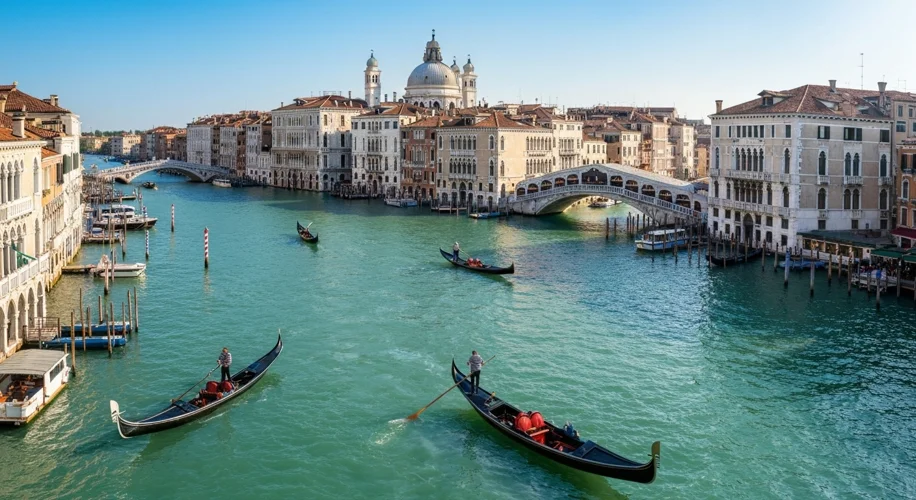Imagine a city built not on solid ground, but on a shimmering lagoon, a place where streets are canals and the primary mode of transport is a sleek, oar-powered boat. This is Venice, a city that defies logic, a testament to human ingenuity carved from water and dreams. But how did this impossible city come to be? It wasn’t a grand decree or a planned utopia; it was a desperate flight, a struggle for survival that birthed one of the world’s most enduring marvels.
Our story begins in the 5th century AD. The Roman Empire, once an unshakeable colossus, was crumbling. Barbarian tribes, like the Visigoths and later the Lombards, swept across Italy, leaving a trail of destruction. For the inhabitants of the Venetian mainland, life became a precarious gamble. Safety was a luxury they could no longer afford.

The answer lay in the Adriatic lagoon, a seemingly inhospitable expanse of shallow water, treacherous mudflats, and shifting sandbanks. It was a place most would avoid, a watery labyrinth that deterred invaders. But for the refugees, it offered sanctuary. They began to gather on the islands within the lagoon, first on Torcello, then Malamocco, and eventually on the Rialto islands, the most stable and strategically sound.
Building a city on water presented monumental engineering challenges. The very ground beneath them was unstable, a marshy foundation that threatened to swallow any structure. The Venetians, however, were resourceful. They developed a unique building technique that would become the bedrock of their city. Thousands upon thousands of wooden piles, typically alder or larch, were driven deep into the lagoon’s clay bed. These piles were not merely hammered in; they were meticulously prepared and driven using heavy mallets, creating a dense, stable base.

Once these pilings were in place, they formed a platform. On top of this, large stone slabs were laid, creating a solid foundation. Upon these foundations, they built their homes and churches, often using brick or stone. The wood, constantly submerged in the oxygen-poor environment of the lagoon, was remarkably preserved, almost petrified, resisting decay.
The financial aspect of this endeavor was equally daunting. Establishing a new settlement required immense resources. The early Venetians were not wealthy landowners; they were refugees. Their initial wealth came from salt harvesting and fishing. However, as the community grew and stabilized, so did its economic prowess. The strategic location of Venice, offering a safe harbor away from mainland conflicts, allowed it to become a vital trading post. Goods from the East flowed into Europe through its canals, and Venetian merchants, driven by necessity and opportunity, amassed fortunes. This wealth was reinvested into the city, funding further construction and solidifying its unique infrastructure.
The city’s structure evolved over centuries. Initially, the buildings were simple, functional structures. But as Venice grew in power and prosperity, so did its architecture. Grand palazzi, intricate bridges, and magnificent churches rose from the lagoon. The famous canals, like the Grand Canal, were not natural formations but were dredged and maintained to facilitate trade and transport. The city became a marvel of hydraulics, with complex systems for managing water levels and waste.
The consequences of this incredible feat of engineering were profound. Venice not only survived but thrived. It became a powerful maritime republic, a center of trade, art, and culture that dominated the Mediterranean for centuries. Its unique waterborne infrastructure shaped its society, fostering a distinct way of life, a culture of boatmen, traders, and skilled artisans.
Venice’s story is a powerful narrative of resilience. It demonstrates how adversity can spur innovation and how a community, driven by the need for security, can achieve the seemingly impossible. The city, built on a foundation of wooden stilts and sheer determination, remains a living monument to human adaptability and the enduring power of ingenuity against the odds.

